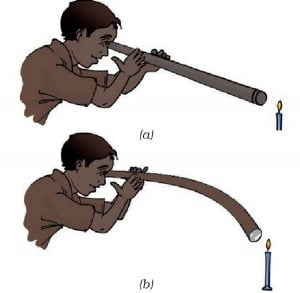Light Shadows and Reflections Activity Explanation, NCERT Science class 6 Chapter 11
Table of Contents
Activity 1
Activity 1 asks us to collect various materials and check if we can see through them.
Observation: When we peep through various materials, we find that:
1. Some materials like glass, spectacle, lens etc. we can see across.
2. Some materials like steel plate, book, cardboard, bag etc. we can not see at all.
3. Some materials give an unclear view like paper, oil, etc.
Explanation: Some materials allow light to pass easily. We call them transparent viz. glass, lens, etc. With them, we can see across clearly.
Some materials allow very small light to pass. These are translucent objects viz. paper, dirty water, etc.
There are also objects which do not pass the light. We call the opaque substance viz. wooden window, brick wall, etc.
Activity 2
Activity 2 asks us to put an opaque object slightly above the ground in the sun an observe the ground.
Observation: We see a black patch on the ground. This patch is similar in the shape of the object.
Explanation: we see things because light passes to the object and reflect to our eyes. When we put an opaque object above ground in the sun, the portion of the ground below the object does not receive the light. As a result, light from that part of the ground does not reflect our eyes, and we see a black (dark) imprint of the object. We call this dark imprint as a shadow of that object.
Activity 3
Activity 3 asks us to go to a park in the evening and see if torch can make a shadow of the friend on cardboard or not.
Observation: We get the shadow on the cardboard, but if we remove the cardboard, the torch is not able to make shadows.
Explanation: An object in front of a light source always make a shadow, but a shadow needs a surface to show up. If we put cardboard behind the object, the light creates an easily distinguishable shadow. When we remove, the cardboard shadow is formed on the ground or trees which is far away. With distance, the intensity of shadow decreases as light disperse. As a result, we do not see the shadow without cardboard. However, if the forest or park is entirely dark, then we can also see our shadows on the ground and trees with a torch.
Activity 4
Activity 6 asks us to observe the shadow of a chair in a different position.
Observation: Sometimes the shadow of the chair shows the same shape but there are some instances when we see the completely different shape from the shadow.
Explanation: A shadow is just a virtual imprint of an object. It may or may not have the same shape and size. Its shape and size depend on the direction of the source of light, screen position and distance. Sometimes an object is easily guessable while there are times when we can not.
Conclusion: A shadow may or may not have the same shape and the size of an object.
Activity 6

Observation: We can see the candle through a straight pipe, but a bent pent do not let us see the candle.
Explanation: Light travels in a straight line. When we bend the pipe, light from a candle does not pass through the pipe. As a result, we do not see the candle with a bent pipe.
Conclusion: This activity shows us that light travel in a straight line.
Activity 7
Activity 7 asks us to put light on a mirror and check the observation.
Observation: A mirror reflects the light.
Explanation: A ray of the light consists of numerous tiny rays. Tiny rays bounce when they fall on the surface. If the surface is a plane like a mirror, they reflect in the same direction. So, when we put light on the mirror it reflects in a fixed direction which we can easily see.
Activity 8
Observation: Here we see a criss-cross pattern
Explanation: The shadow of a comb makes numerous line like pattern. A mirror deflects these lines. As a result, we see a criss-cross pattern.
Next: Light Shadows and Reflections Solution.
See also: Chapter 9; The living organism – Characteristics and Habitat Activity.
coming soon.
can you please create activity answers for chapters 12-16 also in ncert CBSE SCIENCE CLASS 6
very good notes
helpful